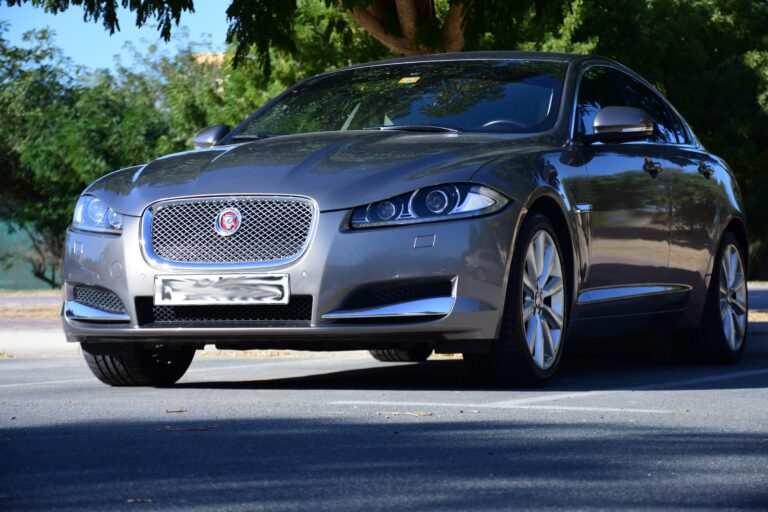The Best Car Stereo Brand: A Comprehensive Guide to Elevating Your In-Car Audio Experience
The Best Car Stereo Brand: A Comprehensive Guide to Elevating Your In-Car Audio Experience cars.truckstrend.com
Introduction: Defining "The Best" in Car Audio
In the realm of car audio, the quest for "The Best Car Stereo Brand" is a journey many enthusiasts and everyday drivers embark on. But what truly defines "the best"? Is it the brand with the most powerful output, the clearest sound, the most advanced features, or simply the one that offers the best value for money? The truth is, "the best" is a highly subjective and multifaceted concept, deeply intertwined with individual needs, preferences, and budget.
The Best Car Stereo Brand: A Comprehensive Guide to Elevating Your In-Car Audio Experience
A car stereo, or head unit, is the command center of your vehicle’s audio system. It’s where you select your music, control volume, and access a myriad of features like navigation, smartphone integration, and sound customization. A superior car stereo brand can transform a mundane commute into an immersive listening experience, enhancing clarity, depth, and overall enjoyment of your favorite tracks. This comprehensive guide will navigate the complex landscape of car audio brands, helping you understand the key factors that contribute to a truly exceptional in-car sound system, and ultimately, guiding you towards what "The Best Car Stereo Brand" means for you.
The Nuance of "Best": Defining Your Audio Priorities
Before we delve into specific brands, it’s crucial to understand that no single brand reigns supreme for every user. "The Best Car Stereo Brand" for an audiophile seeking pristine sound reproduction might be different from the best for someone prioritizing seamless smartphone integration or robust navigation. To identify your personal "best," consider these priorities:
- Sound Quality (Audiophile Focus): Are you chasing crystal-clear highs, rich mids, and tight bass? Brands known for advanced Digital Signal Processing (DSP), high-resolution audio support, and quality internal components will be paramount.
- Features & Connectivity (Tech-Savvy User): Do you need Apple CarPlay, Android Auto, Bluetooth streaming, multiple USB inputs, built-in navigation, or even Wi-Fi connectivity? Modern features significantly enhance convenience and safety.
- Power Output & Expandability (System Builder): If you plan to add external amplifiers, subwoofers, or upgraded speakers, you’ll need a head unit with strong pre-amp outputs (high voltage) and comprehensive crossover controls.
- Budget (Value Seeker): Car stereos range from under $100 to over $1000. Defining your budget helps narrow down options and ensures you get the most bang for your buck without overspending on features you don’t need.
- Ease of Use & Interface (Practical User): A cluttered or unintuitive interface can be frustrating. Look for responsive touchscreens, logical menu structures, and easily accessible physical controls.
- Vehicle Compatibility & Aesthetics: Does the stereo fit your car’s dash (single-DIN, double-DIN)? Does its design complement your car’s interior? Some vehicles require specific integration kits.
- Reliability & Customer Support: A reputable brand often means better product longevity and accessible customer service should issues arise.

By prioritizing these aspects, you begin to form a clearer picture of what "best" means in your specific context.

Key Features to Look For in a Top Car Stereo Brand
Regardless of the brand, certain features distinguish a premium car stereo from a basic one. Understanding these will help you evaluate potential candidates:
1. Superior Sound Processing & Customization
- Digital Signal Processing (DSP): Allows for precise manipulation of audio signals, including time alignment (to make sound reach your ears simultaneously from all speakers), detailed equalization (EQ), and advanced crossover settings.
- High-Resolution Audio Support: For audiophiles, the ability to play lossless audio formats (FLAC, WAV) at higher sample rates and bit depths ensures a more faithful reproduction of the original recording.
- Pre-Amp Outputs: Multiple sets (front, rear, subwoofer) of high-voltage pre-amp outputs (typically 4V or 5V) are crucial for connecting external amplifiers with minimal noise and distortion.
- Built-in Equalizer: A graphic or parametric EQ allows you to fine-tune the sound to compensate for your car’s acoustics and your personal preferences.

2. Seamless Connectivity & Smart Integration
- Apple CarPlay & Android Auto: These are game-changers, mirroring your smartphone’s essential apps (navigation, music, messaging) onto the stereo’s display, allowing safe and intuitive control via voice commands or touch. Wireless versions offer even greater convenience.
- Bluetooth: Essential for wireless audio streaming and hands-free calling. Look for advanced Bluetooth versions for better sound quality and more stable connections.
- USB & AUX Inputs: For connecting external devices, charging phones, and playing media from USB drives.
- HD Radio/SiriusXM Ready: For expanded radio options and subscription-based satellite radio.
- Wi-Fi: Enables features like over-the-air updates, internet radio streaming, and in some cases, wireless CarPlay/Android Auto.
3. Display & User Interface
- Touchscreen: Modern stereos almost universally feature touchscreens. Look for a responsive, high-resolution display (e.g., WVGA or higher) with good brightness and viewing angles.
- Intuitive Interface: Menus should be logically organized and easy to navigate, minimizing distraction while driving.
- Physical Buttons: While touchscreens dominate, dedicated physical buttons for volume, track skip, and home can be safer and more convenient for quick adjustments.
4. Expandability & Safety
- Camera Inputs: Support for rearview cameras is almost standard, but some units offer multiple inputs for front or side cameras, enhancing safety and parking ease.
- Steering Wheel Control Compatibility: Allows you to retain the convenience of your factory steering wheel audio controls (often requires an adapter).
- Detachable Faceplate: A security feature that helps deter theft.
Leading Contenders: Brands Often Considered Among the "Best"
While "best" is subjective, several brands consistently rank high in terms of innovation, sound quality, features, and reliability. These are the names you’ll frequently encounter when researching top car stereos:
- Pioneer: A long-standing giant in car audio, Pioneer is renowned for its innovative features, excellent sound processing, and a wide range of products catering to all budgets. Their NEX series head units are particularly popular for their advanced features like wireless CarPlay/Android Auto and robust audio tuning capabilities.
- Kenwood: Often neck-and-neck with Pioneer, Kenwood is celebrated for its powerful audio processing, intuitive user interfaces, and durable build quality. They offer strong integration with smartphones and often provide excellent value, especially in their mid-to-high-range units.
- Alpine: For the serious audiophile, Alpine often stands out. They focus heavily on premium sound quality, advanced sound tuning features (like multi-channel time correction and detailed equalizers), and robust power delivery. Their products often carry a higher price tag but deliver an unparalleled listening experience.
- Sony: While known for consumer electronics, Sony has a strong presence in car audio. Their head units are often praised for their user-friendly interfaces, good sound quality, and reliable performance. They offer a good balance of features and value, with strong integration for both Apple and Android devices.
- JVC: Often grouped with Kenwood (as they are part of the same parent company, JVCKenwood), JVC provides reliable, feature-rich head units, often at more budget-friendly price points. They offer solid performance and connectivity options, making them a great choice for those seeking good value.
- Clarion: With a strong legacy in marine audio, Clarion also produces robust car stereos known for their sound quality and durability, though their market presence might be less widespread than the top four.
Each of these brands brings unique strengths to the table, making them strong contenders depending on your specific needs.
How to Choose The Best Car Stereo Brand for You: Practical Advice
Selecting the perfect car stereo involves a systematic approach:
- Define Your Needs & Budget: This is the most critical step. List your absolute must-have features (e.g., CarPlay, Bluetooth, high power) and your "nice-to-haves." Then, establish a realistic budget, including the stereo itself, installation accessories (dash kit, wiring harness, antenna adapter), and potentially installation costs.
- Check Vehicle Compatibility: Determine your car’s dash opening size (single-DIN or double-DIN). Websites like Crutchfield.com offer excellent compatibility tools where you input your vehicle’s make, model, and year, and they’ll show you compatible stereos and all necessary installation accessories.
- Read Reviews and Watch Demos: Once you have a shortlist of brands and models, delve into user reviews on retail sites and professional reviews from car audio publications. Watch YouTube video demos to get a feel for the interface and features.
- Consider Future Upgrades: Even if you’re only replacing the head unit now, think about whether you might want to add an amplifier, subwoofer, or new speakers later. Choose a head unit with ample pre-amp outputs and robust sound processing capabilities to accommodate these future enhancements.
- Professional Installation vs. DIY: While many modern stereos are designed for DIY installation, some vehicles (especially those with complex factory systems, fiber optics, or integrated climate controls) require specialized interfaces and professional expertise. If in doubt, professional installation ensures proper wiring, optimal performance, and avoids potential damage.
Maximizing Your Car Audio Experience: Beyond the Head Unit
Even "The Best Car Stereo Brand" won’t sound its absolute best if other components of your audio system are subpar. To truly maximize your in-car audio experience, consider these upgrades and tips:
- Upgrade Your Speakers: Factory speakers are often the weakest link. Even a mid-range set of aftermarket speakers can dramatically improve clarity and dynamic range.
- Add an Amplifier: A dedicated external amplifier provides clean, consistent power to your speakers, allowing them to perform at their full potential without distortion, even at higher volumes.
- Install a Subwoofer: For deep, impactful bass that rounds out the sound, a subwoofer is essential. Whether it’s a compact under-seat model or a large trunk-mounted enclosure, it adds significant warmth and punch.
- Sound Deadening: Applying sound deadening material to doors, trunk, and floor panels reduces road noise and vibrations, allowing your speakers to sound clearer and louder by eliminating interference. This is one of the most underrated upgrades.
- Professional Tuning: Once all components are installed, consider having a professional car audio technician tune your system. They can use specialized equipment to optimize EQ, time alignment, and crossover settings for your specific vehicle acoustics, unlocking the true potential of your setup.
Potential Challenges & Solutions:
- Compatibility Issues: Research thoroughly using online tools or consulting with car audio specialists.
- Complex Wiring: Invest in a proper wiring harness and dash kit, or opt for professional installation.
- Budget Creep: Prioritize your upgrades. Start with the head unit and speakers, then add an amp and subwoofer later if budget allows.
- Vehicle Integration: For cars with highly integrated factory systems, look for specific interfaces (e.g., iDatalink Maestro) that allow retention of factory features.
Price Table: A Glimpse into Leading Car Stereo Brand Offerings
As "The Best Car Stereo Brand" refers to a category rather than a single product, the table below provides illustrative price ranges and key features for various types of head units from the leading brands discussed. Prices are approximate and can vary based on retailer, sales, and specific model variations.
| Brand | Model Type/Category | Key Features | Price Range (USD) |
|---|---|---|---|
| Pioneer | Entry-Level Single DIN | Bluetooth, USB, AUX, Basic EQ, FLAC support | $80 – $150 |
| Mid-Range Double DIN (DMH- ) | 6.8" Resistive Touchscreen, Apple CarPlay/Android Auto (wired), Bluetooth, Rear Camera Input, Basic DSP | $250 – $450 | |
| High-End Double DIN (NEX- ) | 7"-9" Capacitive HD Touchscreen, Wireless Apple CarPlay/Android Auto, Hi-Res Audio, Advanced DSP, HDMI, Multiple Camera Inputs, 4V Pre-Outs | $600 – $1200+ | |
| Kenwood | Mid-Range Double DIN (DMX ) | 6.8"-7" Resistive Touchscreen, Apple CarPlay/Android Auto (wired), Bluetooth, Rear Camera Input, 13-Band EQ | $280 – $500 |
| High-End Double DIN (DMX/DDX) | 7"-10.1" Capacitive HD Touchscreen, Wireless Apple CarPlay/Android Auto, Hi-Res Audio, Advanced DSP (Time Alignment, Crossovers), 5V Pre-Outs | $650 – $1300+ | |
| Alpine | Premium Single/Double DIN | 7"-11" Capacitive HD Touchscreen, Wireless Apple CarPlay/Android Auto, Hi-Res Audio, Audiophile-grade DSP, Advanced Sound Tuning, 4V-6V Pre-Outs | $800 – $2000+ |
| Sony | Value Double DIN (XAV- ) | 6.2"-6.95" Touchscreen, Apple CarPlay/Android Auto (wired), Bluetooth, USB, Rear Camera Input, Basic EQ | $200 – $400 |
| Smart Double DIN (XAV-AX ) | 6.95"-8.95" Capacitive Touchscreen, Wireless Apple CarPlay/Android Auto, Ergonomic Design, Good Sound Quality, 3 Pre-Outs | $500 – $800 |
Note: This table provides general price ranges and feature sets. Specific models within each category will vary.
Frequently Asked Questions (FAQ)
Q1: What’s the difference between a single-DIN and a double-DIN car stereo?
A1: These refer to the size of the stereo. A single-DIN (1-DIN) unit is roughly 2 inches tall, while a double-DIN (2-DIN) unit is about 4 inches tall. Most modern touch screen stereos are double-DIN, offering a larger display.
Q2: Do I need an amplifier if I upgrade my car stereo?
A2: Not necessarily. A new head unit will often provide clearer sound than your factory unit. However, if you want significantly louder volumes without distortion, or if you upgrade to more powerful aftermarket speakers, an external amplifier is highly recommended to provide them with sufficient, clean power.
Q3: Is professional installation necessary?
A3: For basic head unit replacements in older vehicles, DIY is often feasible. However, for newer cars with complex integrated systems, or if you’re adding amplifiers, subwoofers, and doing sound deadening, professional installation ensures proper wiring, optimal performance, and avoids potential damage to your vehicle’s electronics.
Q4: What are Apple CarPlay and Android Auto?
A4: They are smartphone integration platforms that mirror essential apps (navigation, music, messaging, phone calls) from your iPhone or Android device onto the car stereo’s display. They allow for safe and intuitive control via the touchscreen or voice commands (Siri/Google Assistant).
Q5: Can I keep my steering wheel controls with a new car stereo?
A5: Yes, in most cases. You’ll typically need to purchase a separate steering wheel control interface module (like those from Axxess or PAC) that translates your car’s factory signals into commands the new stereo can understand.
Q6: How much should I spend on a car stereo?
A6: The price range is vast, from under $100 to over $1000. For a solid upgrade with essential features like Bluetooth and good sound, expect to spend $150-$300. If you desire Apple CarPlay/Android Auto, a responsive touchscreen, and better sound processing, expect $300-$700. Audiophile-grade units with premium features can exceed $800.
Q7: Will a new stereo improve sound quality without new speakers?
A7: Yes, to some extent. A good aftermarket head unit typically has a cleaner internal amplifier, better digital-to-analog converters (DACs), and more advanced sound tuning features (like EQ and DSP) than a factory unit. This can result in noticeably clearer and more balanced sound from your existing speakers. However, for the most significant sound quality improvement, upgrading speakers is highly recommended.
Conclusion: Your Journey to The Best Car Stereo Experience
Ultimately, "The Best Car Stereo Brand" isn’t a singular entity but rather a culmination of your personal needs, budget, and desired features aligned with a brand’s strengths. Whether you prioritize pristine sound, cutting-edge smart integration, robust power, or simply great value, there’s a leading brand and a specific model out there designed to meet your criteria.
By understanding the key features, exploring the reputable brands, and following practical advice on selection and installation, you can confidently navigate the world of car audio. Remember that the head unit is just one part of the equation; integrating it with quality speakers, an amplifier, and sound deadening will unlock the full potential of your in-car sound system. Invest wisely, and prepare to transform every drive into a dynamic and enjoyable auditory adventure.






